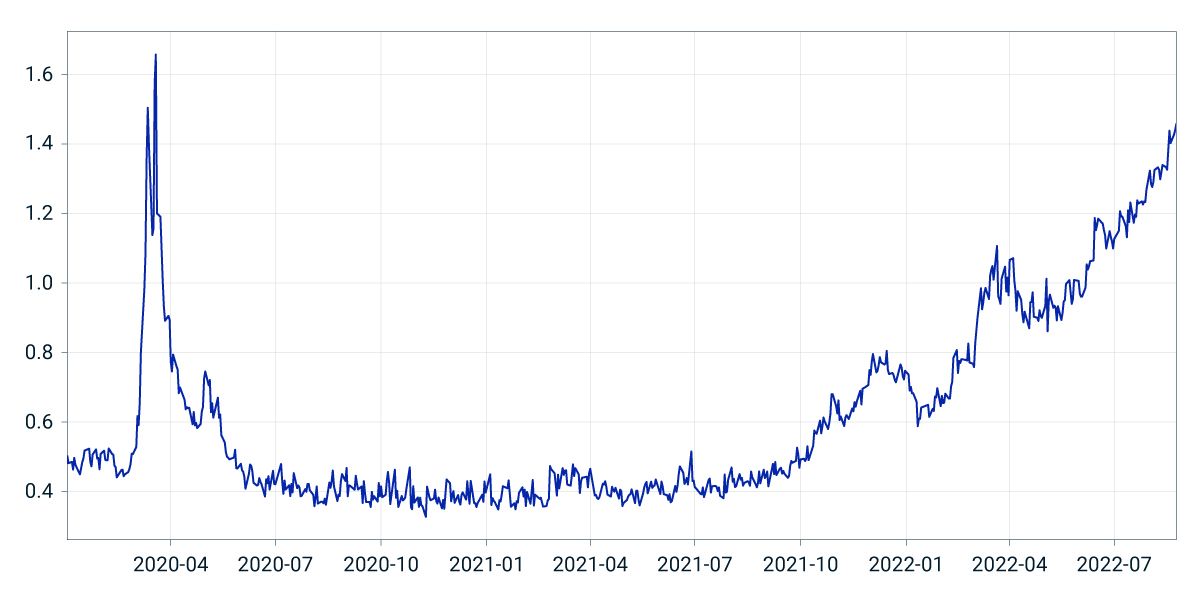Deteriorating Liquidity Complicates Fed Action
The erosion in U.S. Treasury market liquidity over the past 10 months could worsen as the Fed more aggressively reduces the size of its balance sheet. Investors in Treasurys may face higher transaction costs, and institutions hedging with Treasurys may incur greater trading losses resulting from hedge slippage.
Fed actions have influenced Treasury market liquidity
Massive bond purchases by the Fed after the onset of the COVID-19 crisis in early 2020 coincided with a dramatic improvement in liquidity conditions as measured by yield dispersion. Starting in the fall of 2021, however, liquidity began to deteriorate as the Fed stated its intent to slow bond purchases. Liquidity continued to worsen as the Fed announced guiding principles for reducing the size of its portfolio in January of this year.
Looking forward, the Fed might be tempted to slow the runoff of their Treasurys portfolio (currently scheduled to double in size to USD 60 billion per month starting in September) in an effort to improve market liquidity. But doing so could further harm its credibility with investors, which has suffered over the past year as the Fed's initial inflation projections turned out to be way too optimistic and inflation reached 40-year highs.
During the early days of the COVID-19 crisis, Chair Powell partly justified the Fed's asset purchase program as necessary to restore market liquidity. Today, it seems quite plausible that Treasury market liquidity may soon be worse than what was experienced during COVID-19. Market participants will be closely following how the Fed balances market liquidity with its efforts to reduce the size of its portfolio — as will we.
Liquidity deterioration approaching previous COVID highs

U.S. Treasury market yield dispersion around base curve (in basis points)
Subscribe todayto have insights delivered to your inbox.
Was the Treasury Price Right? Yield Dispersion Amid COVID-19
Yield dispersion around a yield curve can help investors analyze Treasury-price uncertainty in a way that complements traditional volatility measures.
Has the Bond Market Gone Crazy?
Signals from the bond market show what some investors consider a remarkably optimistic inflation outlook.
Government-Bond Yields and Inflation
Inflation expectations based on the prices of government bonds have sharply risen since January, as military conflict in Ukraine increased in likelihood and then turned into an all-out war.
The content of this page is for informational purposes only and is intended for institutional professionals with the analytical resources and tools necessary to interpret any performance information. Nothing herein is intended to recommend any product, tool or service. For all references to laws, rules or regulations, please note that the information is provided “as is” and does not constitute legal advice or any binding interpretation. Any approach to comply with regulatory or policy initiatives should be discussed with your own legal counsel and/or the relevant competent authority, as needed.

